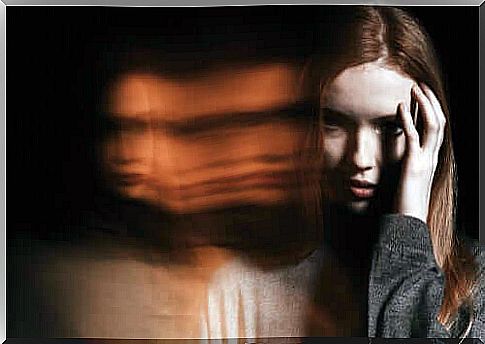What Is Paranoia And Why Does It Hurt Us?

Paranoia is interpreted differently by the fields of psychiatry and psychoanalysis. The concept first developed in psychiatry and it simply corresponded to a form of dementia.
Over time, psychiatry ruled out the idea of a diagnosed entity. In fact, paranoia began to be identified in patients with other mental disorders such as schizophrenia. With this discovery, paranoia ceased to be identified as a separate entity and turned into a symptom associated with other pathologies. Currently and according to the DSM (Diagnostic and Statistical Manual of Mental Disorders), “delusional syndrome” is the one that most closely resembles paranoia.
In the field of psychoanalysis, something totally different is happening. At first, Sigmund Freud introduced the concept as a form of neurosis derived from obsession. Later, in particular with the Schreber case, he understood that it was in fact a psychosis. Lacan for his part carried out his doctoral thesis based on the Aimée case: a healed paranoia.
A little history
The word paranoia comes from the Greek root “ para ” which means “alongside” or “during” and from the word “ noev ” which means to think or to understand. By its etymology, we understand then that paranoia corresponds to the fact of “having parallel thoughts”. The first to evoke this concept was Hippocrates.

For a very long time, the term paranoia was used to refer to insanity. The German Kahlbaum was the first to speak of it as a differentiated entity in 1863. Kraft-Ebing soon after developed the concept and in 1879 he defined paranoia as “an insanity which mainly affects judgment and reasoning”.
Other individuals tried to define this problem. However, it was Kraepelin’s concept that prevailed in 1889. From this time on, paranoia became a type of disorder involving the presence of delusions, with no other apparent psychopathology. The concept had its place in the DSM until 1987, when it was replaced by “delusional disorder” or “paranoid personality disorder”.
Paranoia in psychoanalysis
In his work, The Defense Neuropsychoses (1894), Sigmund Freud first evoked paranoia without being able to fully conceptualize it. Freudian psychoanalysis focused in particular on neuroses. Freud then initially associated paranoia with a mechanism of projection in time without succeeding in developing the concept in a conclusive way.
Neisser defines a fundamental aspect of the way in which psychoanalysis approaches the paranoid phenomenon. He identified it as “a unique means of interpretation”. In fact, the paranoid has the impression that somehow everything he observes refers to him.
For his part, Jacques Lacan, goes further into the subject. In a text from 1958 in which he mentions the Schreber case addressed by Freud, Lacan defines paranoia as “ the identification of one jouissance in the place of the other ”.
Lacan was cryptic. For this reason, it is difficult to understand it. His assertion would therefore correspond to the slogan of paranoia “ The Other takes advantage of me ”. Jacques Lacan literally puts it this way “ He (the paranoiac) offers himself as support to God or to the Other so that he can enjoy his passivated being .”

Clarify the concept of paranoia
In psychoanalysis, a paranoid person is not only a person lacking in confidence. He is a person who gets used to thinking according to the ideals of popular culture. The individual affected by this disorder bases his reasoning on two truths:
- The first: a kind of “wickedness” or “cruelty” is attributed to him and he will be a victim of it.
- The second: everything that happens in the world is somehow associated with it.
The paranoiac therefore interprets the world from these two truths and on the basis of a delirium. Delirium is an unreasonable story. In paranoia, this story is linked to a form of wickedness that wishes to convert the individual into a victim. A typical sentence might for example be: “The evil spirits take possession of my mind” . Spirits can also correspond to the Devil or to Martians.
In this state, the individual interprets the facts from a story taken straight from their mind. Thus, the loss of an object could for example be the proof that, the spirits, the Martians, the demons or any other evil identity, are playing with it or manipulating it.
As Lacan pointed out, “ The Other takes advantage of me ”. Faced with this observation, the person with paranoia feels completely “passivated”. She attributes all the events of her life to the evil creatures “ It’s not my fault, it’s the Other ”. This belief and delusion develop from relatively simple situations such as excessive jealousy and they can have very serious consequences as was the case in the case of Aimée.










